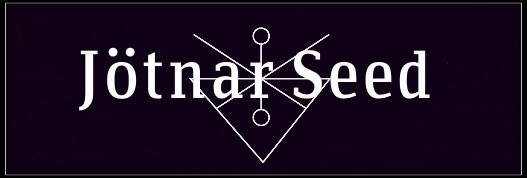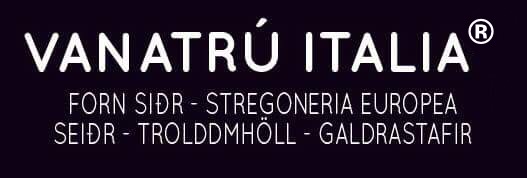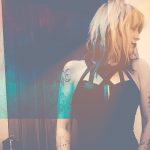Translation by Federico P.
The Fylgjur have long been associated (and not) with the witch’s companions. We find this in many Icelandic folk tales, especially in ancient Nordic literature and pagan belief; is a view supported by both Jón Árnason and the eminent folklorist Einar Ólafur Sveinsson.
Despite their obvious differences, significant similarities persist between ancient fylgjur figures and medieval visions.
Jacqueline Simpson’s translations, Icelandic Folktales and Legends, first published in 1972 and her lesser-known collection entitled Legends of Icelandic Magicians, both excellently present the tales in an academic context.
However, for the interested reader, Brya’s study constitutes a pearl that validates all our theories on the witchcraft practice of the fylgjur.Some precious stories have fallen by the wayside. One of these groups of stories is the body of the so-called “fylgjur” stories, treated by Brya that we will try to relate to in this article.
In a work entitled Nova Descriptio Islandiæ (c.1680), P.H. Resen records a ghost story in Iceland, originally written by Icelandic Gísli Vigfússon, whose original work is now lost.
These later accompanying spirits possess significantly different characteristics from those of medieval accounts.Vigfússon, for example, described troll-like figures who, after death, attach themselves to a family or individual.
Linguistically, dís and hamingja have a simpler connotation. The word dís generally refers to a goddess or priestess, but in the terms discussed here it denotes a female guardian spirit.
The word hamingja, in an interesting way, can suggest real luck or fortune, while retaining the meaning of a guardian spirit, and this we have extensively discussed in various of our articles and esoteric texts.
The connotation “to support” or “to help” leads to the prefix fylgi-, which means help or support. A fylgisamur is a faithful follower, fylgð is a “following” or “support” and the adjective fylginn means “adherent”.
Even recognizing the differences between the fylgja and the more Christian version of a soul, fylgjur often appears as a rather unique figure in ancient Norse literature. Some fylgjur behave more like valkyrir of Norse mythology, serving to direct the fate of living individuals.
Subsequently, the image is strengthened, stating that we have two types of assistant spirits. One is that of the animal fylgja, which could be translated “fetch”, or the one who accompanies a human being through life, who can be seen by others in dreams or waking hours (if they have the gift of second sight).
The other conception of “assistant spirit”, as we have seen, is that of a supernatural guardian woman, who assists an individual until death and survives him; after her death he manages to enter her home, and she then binds to another, often from the same family.
At certain significant moments, the guardian spirit will transfer its allegiance to another individual, often a descendant or friend, and to others.In Hallfreðarsaga, chapter 11, a fylgjukona arrives in Hallfreðr and declares that their relationship has come to an end (obviously, badly foreshadowing for Hallfreðr), later negotiates the transfer of her guardianship to Hallfreðr the younger, an agreement that seems to all please the parties involved.
However, it is highly unlikely that the Nordic figures would have derived from the same tradition as the Christian guardian angels. Ross rejects the idea postulated by Gallén that messengers of fate such as the nornir (other assistant guardians) may have been influenced by Christianity.
Ross argues that “the concept of a tutelary spirit is widespread in early Norse culture and foreign import is unlikely.”Indeed the relationship with cursing is really powerful. In one excerpt, a certain Þorgarður responds by cursing a couple: “Ekki mun hér skilið með okkur; því ekki er það meira en fyrir mig að sjá svo um að kveðja mín fylgi ykkur hjónum og ætt ykkar í níunda lið I will assist (fylgi) you and your family for nine generations. “
These mythical figures have a direct correspondence in later fylgjur tales, and often these later figures act in much the same way as their Nordic predecessors.
Also from Eric Shane Brya in his Icelandic Fylgjur Tales and a Possible Old Norse Context, we have an interesting data that collects many sources that attest to all our theory concerning this witchcraft form from Scandinavian folk.
In Jón Árnason’s collection, five tales by fylgjur deal specifically with this figure: “Dalakúturinn” (“The Treasure Cask” Jón Árnason 1954, 1: 342–43), 17 “Tvær Sagnir um Fylgjur” (“Two Stories about Fylgjur” ; Árnason 1954 1: 344–45), “Þeir Koma þá Fjórir” (“Then come four” Árnason 1954 1: 345), “Galtardalstófa” (“Fox of Galtardal” Árnason 1954 1: 345) and “Anna á Bessastöðum” (“Anna in Bessastaður” Árnason 1954 1: 346)
“Galtardalstófa” suggests a similarity between this function of the soul or fylgja and the function of a sending, which has more or less the same purpose and which is often evoked by a similar motivation.
These ghosts also attach themselves to an entire family, transferring their presence, just like the fylgjur of pagan belief, from one generation to the next.


For more information:
Laugrith Heid, La Stregoneria dei Vani, Anaelsas edizioni.
*Shares without reference to the source are subject to complaint, since the elements of copyright established by italian law are infringed*

Ylenia Oliverio
Fondatrice e docente dell'Accademia Vanatrú Italia.
Laureata in Filosofia e Storia, Master post Laurea in Beni Archeologici, Master in Preserving and Increasing Value of Cultural Heritage, conseguito a Roskilde (Copenaghen), ulteriore integramento post Laurea.
Archeologo da oltre 13 anni, specializzata in scavo dei cantieri urbani, ha incentrato la sua attenzione verso i culti dell’Europa del Nord e dell'Euroasia durante la sua permanenza nel Canton Ticino per stages formativi al Centro Studi Internazionali Luganesi.
Svolge attività di formazione e informazione, in Italia e in Europa, per la promozione, divulgazione e rivalutazione del Culto Vanico, del Paganesimo puro e degli Antichi Culti dell’Europa ed Euroasia.
Il primo incontro con la Stregoneria Tradizionale è avvenuto nel 1990.

